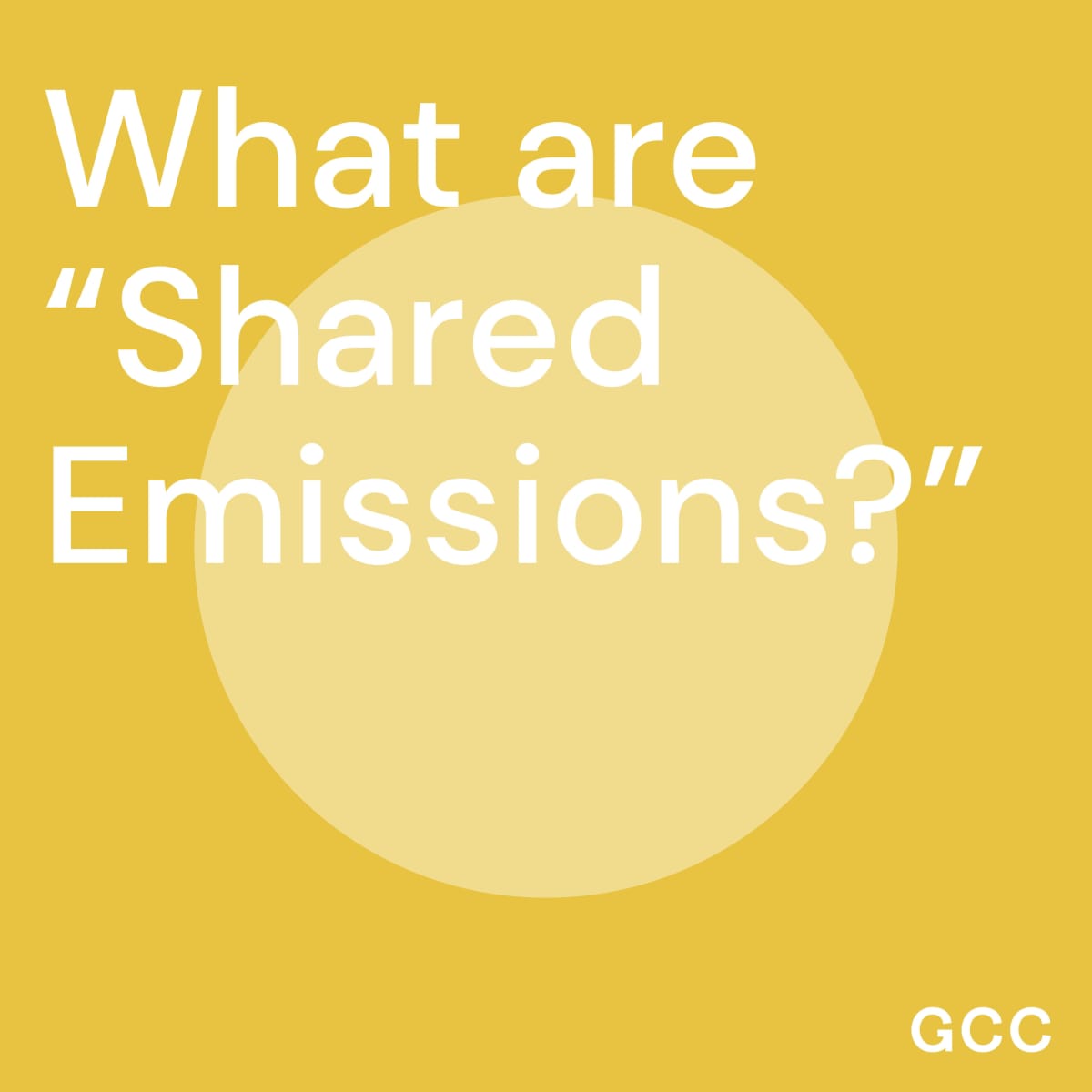What do we mean by “Shared Emissions”?
One of the new elements of the updated GCC carbon calculator is the inclusion of emissions for Staff Commuting and Visitor Travel. These are reported in the calculator under a separate heading, known as “Shared Emissions”. But what does this mean?
We have separated out these two categories of emissions because we believe GCC members should measure and take action on them, but not include them in their core 2030 targets. Responsibility for these emissions are shared between you, your visitors, your staff and others (local public transport companies, local authorities, wider society’s attitudes towards travel and so on). The tool therefore calculates these emissions separately and does not add them to your main target.
We have chosen to do this to give our members what we hope is useful clarity around this tricky issue, especially with regard to visitor travel – which for public arts institutions can be many times larger than their “core” operational emissions. Because these emissions are not under your direct control, and require joint action by yourself and other key actors, it does not seem appropriate to lump them in with your core targets, especially in cases where those shared emissions would then become the vast majority of your footprint. This could have a demoralising effect and reduce the impetus to take action on other parts of your footprint. Instead, we hope that setting a separate target and action plan for shared emissions could help unlock new avenues for action without undermining your core targets.
To be clear: even though you do not have complete control over your shared emissions, you do have a significant influence over them and so share the responsibility to monitor and decrease these emissions. For certain GCC members (i.e. those with significant public footfall and/or staff numbers) these emissions are likely to be significant, so we strongly recommend that you measure and report on them. However, they should be considered separately from your core operational footprint and not included in your 2030 reduction target. “Shared responsibility” emissions should instead have their own discrete reduction plan, ideally developed in partnership with other organisations and individuals who also have a stake in those emissions.
This could look like the following:
- Carrying out staff and visitor travel surveys, to calculate a more accurate footprint and to better understand people’s current travel patterns and the challenges and opportunities available.
- Contacting other organisations with a stake in these emissions, to discuss a shared strategy and possible target. This could include local authority travel planners, local bus companies, cycling/active travel campaigns, and other local business/institutions that could also benefit from improved local travel options.
- Communicate clearly and non-judgementally with your staff and visitors, explaining your goals in this area and actively engaging and involving them in your plans – including responding to their concerns and taking their ideas on board where appropriate.
Specific actions you could take to reduce these emissions might include:
- Providing secure parking or storage for bicycles and scooters, and electric charging points for electric vehicles.
- Limiting car parking where possible (while ensuring enough is available as needed by disabled visitors)
- Signing up to any “Cycle to work” schemes or similar that exist in your local area.
- Working with local authorities and other local venues and businesses to improve public transport services for your audiences.
- Offering discounts and incentives for visitors and staff who use low-carbon travel methods or car-share.
- Holding special events to promote low-carbon travel (eg a mass cycle ride or bus trip to visit a relevant exhibition).
- Inviting local advocates for low-carbon travel (eg active travel groups, bus users groups, health campaigners) to participate in events, interact with staff and visitors and co-curate programmed activities.
- Re-examining assumptions about who your audiences are and who your organisation should be appealing to. This could go hand-in-hand with other important live discussions about museums’ role in their local community. An arts organisation that primarily serves people from its local area will have a much lower visitor travel footprint than one with an operational model built on national or international tourism.
- Considering how more geographically distant audiences might be able to engage with your exhibitions and programming using digital technology, without needing to physically travel to your venue(s).

